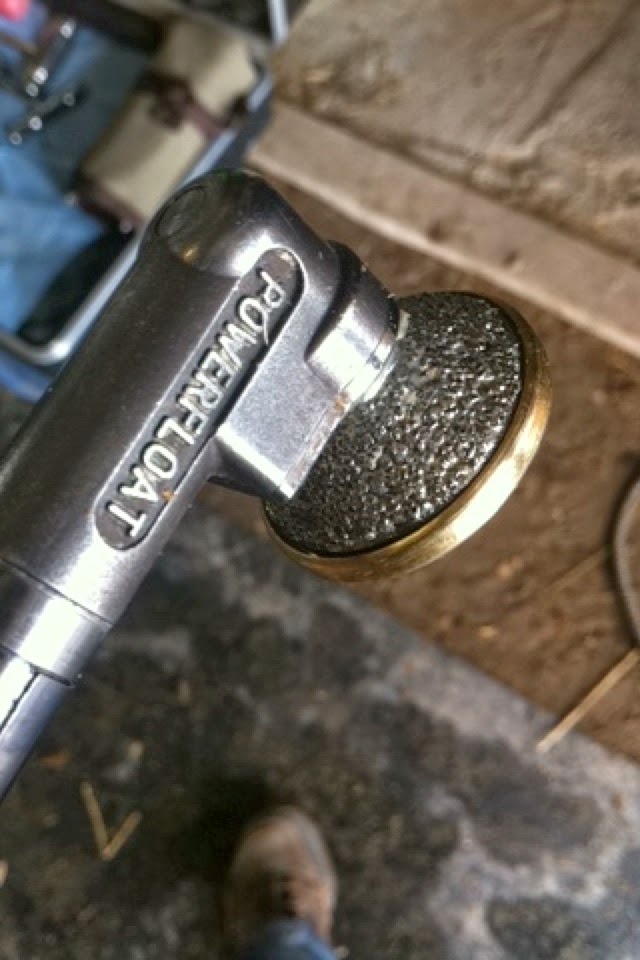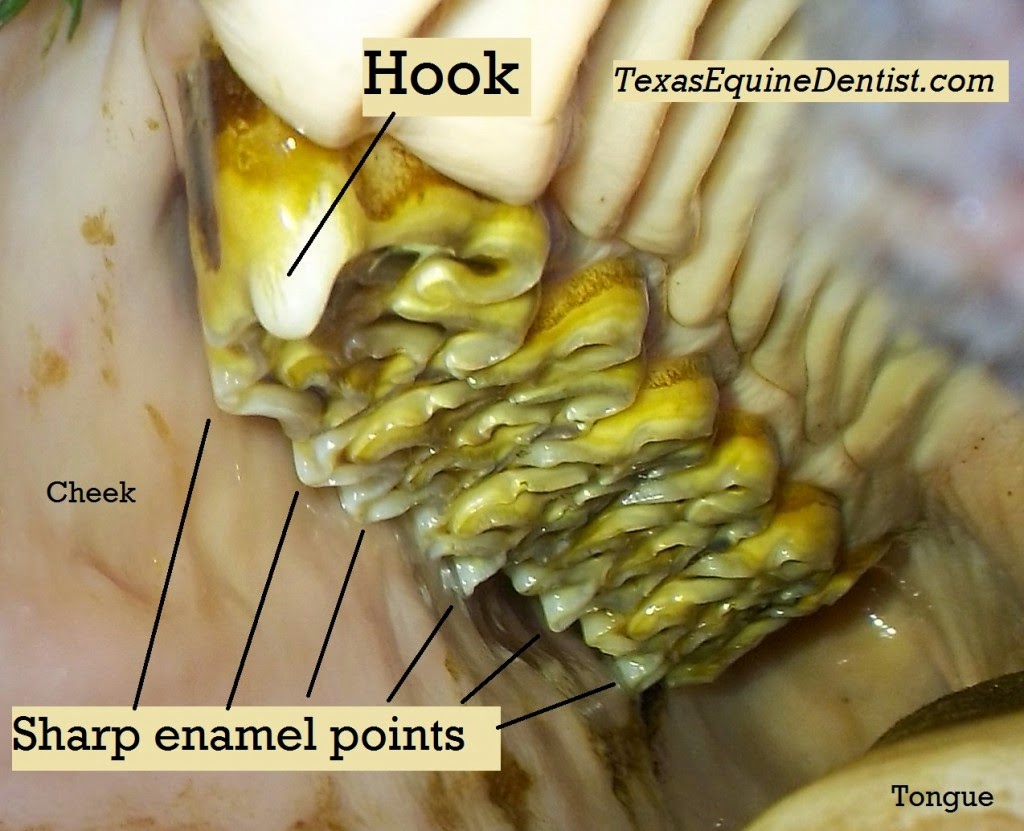Everyone who likes going to the dentist please raise your hand…err, your hoof. Well I don’t see any hands or hooves up (not surprisingly).
This was my first time seeing how horses get their teeth floated at the
barn. Wow, and I thought going to the dentist was rough on me. It’s a
whole different ballgame for horses. In the past, when I talked about teeth floating
, it was because someone really had to go to the bathroom – so bad,
their teeth were floating. Not anymore…now I have a whole new perspective on what it means to have your teeth floating.
Who knew that horse teeth, unlike people teeth, continue to grow for the life of the horse. So horses have their teeth floated, or should have their teeth floated about once a year.
So what is floating and why is it necessary? In nature, as they grazed the teeth would wear down as fast as they grew. So with grazing all day in nature, the teeth generally stay flat. However, with today’s horses being fed special feeds such as grains and pellets, their rear chewing teeth (molars) tend to get sharp edges when they wear down. And their teeth also don’t wear down as fast as they grow because they are not grazing (chewing) as long during the day and have less jaw movement when they chew feed.
Who knew that horse teeth, unlike people teeth, continue to grow for the life of the horse. So horses have their teeth floated, or should have their teeth floated about once a year.
So what is floating and why is it necessary? In nature, as they grazed the teeth would wear down as fast as they grew. So with grazing all day in nature, the teeth generally stay flat. However, with today’s horses being fed special feeds such as grains and pellets, their rear chewing teeth (molars) tend to get sharp edges when they wear down. And their teeth also don’t wear down as fast as they grow because they are not grazing (chewing) as long during the day and have less jaw movement when they chew feed.
The diagram shows what I mean about how molars wear down to produce sharp edges. The top molars get sharp edges on the outside against the cheeks while the lower teeth get sharp edges on the inside.
Uneven wearing of the teeth can cause all sorts of problems with eating and biting and digestion. And could even result in colic. But it can also cause problems riding because of the bit in the mouth. The horse may pull or tilt the head to the side when being ridden or may have difficulties in bending.
Below are both a before and after picture of the top molars of an actual horse that had its teeth floated. Note how the outside edges are sharp edges. Also see the hook on the front molar that can affect the bit in the mouth which could make the horse more difficult to ride.
Now that we know the what and why, how does the vet float a horse’s teeth? It’s an interesting process
and one that took me back a little when I watched it this week. With a cordless power drill (quite literally) and a diamond chip grinder (or
a manual float file - which is a simply a rasp on a long handle), the vet literally grinds (files) the teeth down.
But first the
anaesthetic…and then the vet attaches the speculum (brace) to keep the mouth open. The speculum goes over the front teeth and is attached to the horse's head with a harness. The vet turns two screws which opens the horse's mouth wide enough to inspect and work. It looks comfortable, doesn't it.
 Then using a rope and pulley system, the head is lifted and held in
position so the vet can have a close look at the teeth. Doing a hand and a visual inspection, the vet assesses the teeth,
looking for hooks, potential fractures, and any other problems.
Then using a rope and pulley system, the head is lifted and held in
position so the vet can have a close look at the teeth. Doing a hand and a visual inspection, the vet assesses the teeth,
looking for hooks, potential fractures, and any other problems. 







No comments:
Post a Comment